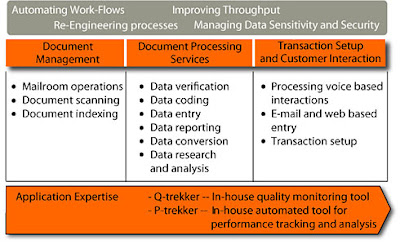1. What is a Transactional Processing and the role of TP systems. State the key objective of TP/TPSs.
 Section 8.2 - Before You Go On…
Section 8.2 - Before You Go On… 1. What is a functional area information system? List its major characteristics.
The functional area information systems provide information mainly to lower and middle level managers in the functional areas. They use the information to help them plan, organize, and control operations. The information is provided in a variety of reports.
2. How does an FAIS support management by exception? How does it support on-demand reports?
FAIS support management by exception reports by collecting and analysing all data that is required for the report. For example in a sales example, management would establish sales quotas, the company would implement FAIS that collects and analyses all sales data.FAIS support ad hoc (on demand) reports by providing drill-down reports, which show a greater level of detail; key indicator reports, which summarise the performance of critical activities; and comparative reports, which compare there performances of different business units or time periods.
Section 8.3 - Before You Go On… 
1. Define ERP and describe its functionalities.
Eterprise resource planning systems integrate the planning, management, and use of all of an organisations resources. The major objectives of ERP systems are to tightly integrate the functional areas of the organisations and to enable information to floe seamlessly across the functional areas. Tight integration means that changes in one functional area are immediately reflected in all other pertinent functional areas.
2. List some drawbacks of ERP software.
Enterprise Resource Planning Systems integrate the planning, management, and use of an organisations resource. The main objective is to tightly integrate the functional areas of the organisation and to enable information to flow seamlessly across the functional areas. Even though many companies develop their own Enterprise Resource Planning Systems (ERP) they do have drawbacks for instance these include:
- Extremely complex
- Expensive
- Time consuming to implement
- Need to change existing business process to fit the software
- Companies must purchase the whole software if they only require a few models.
ERP Advantages & Disadvantages - http://gleez.com/erp-advantages-disadvantages
Section 8.5 - Before You Go On…
1. Define a supply chain and supply chain management (SCM). 
The supply chain refers to the flow of materials, information, money and services from raw material suppliers through factories and warehouses to the end customer. Supply chains also include the organisations and process that create and deliver products, information, and services to end customers. Whereas the supply chain management is to plan, organise, and optimize the supply chain’s activities. A typical supply chain, which links a company with its suppliers and its distributors and customers, involves three segments: upstream, internal and downstream.
2. List the major components of supply chains.
The supply chain links the company with its suppliers, distributors and customers. The supply chain involves three main segments:
1) Upstream – when sourcing or pronouncement from external suppliers occur
2) Internal – where packaging, assembly, or manufacturing takes place
3) downstream – where distribution takes place, frequently b external distributors.
One of the major difficulties in properly setting inventory levels in various parts of the supply chain is known as the bullwhip effect. The effect refers to the erratic shifts in orders up and down the supply chain.
Bullwhip Effect - www.12manage.com/description_lee_bullwhip_effect_supply_chains.html
Section 8.6 - Before You Go On…
1. Define EDI and list its major benefits and limitations
Electronic data interchange (EDI) is a communication standard that enables business partners to exchange routine documents, such as purchasing orders, electronically. It formats these documents according to agreed-upon standards, and it reduces costs, delays, and error inherent in a manual document-delivery system.
The advantages of EDI include:
- · Minimizes data entry errors because each entry is checked by computer.
- · The length of the message is shorter
- · The messages are secured
- · Reduces cycle time
- · Increase productivity
- · Enhances customer service
- · Minimises paper usage and storage.
In contrast there are disadvantages which prevent it from being more widely used, these include:
- · A significant initial investment
- · High and ongoing operating costs, due to the use of expensive and private VANs
- · Traditional EDI is inflexible (thus difficult to make changes)
- · Long start-up period
- · Business process need to be restructured to fit EDI requirements
- · EDI standards are in use, thus several standards are in use to communicate with different business partners.
EDI Comparison - http://ksi.cpsc.ucalgary.ca/courses/547-95/franz/547_pres.html


No comments:
Post a Comment